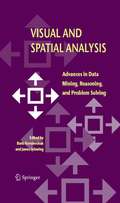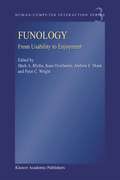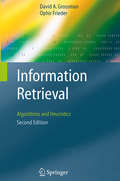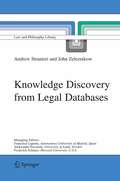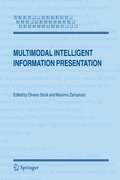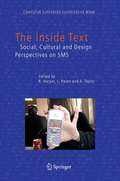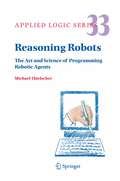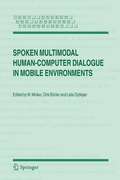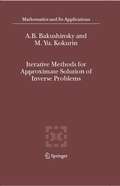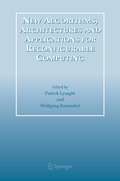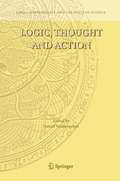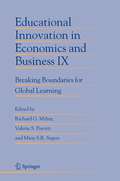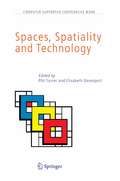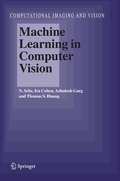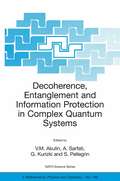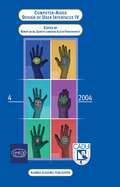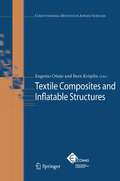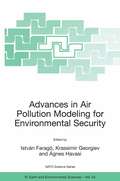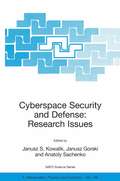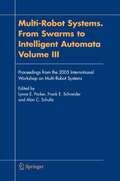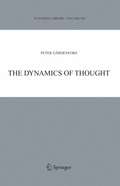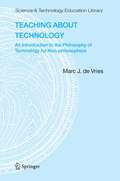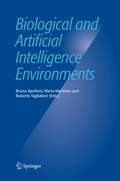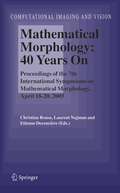- Table View
- List View
Visual and Spatial Analysis: Advances in Data Mining, Reasoning, and Problem Solving
by Boris Kovalerchuk James SchwingAdvanced visual analysis and problem solving has been conducted successfully for millennia. The Pythagorean Theorem was proven using visual means more than 2000 years ago. In the 19th century, John Snow stopped a cholera epidemic in London by proposing that a specific water pump be shut down. He discovered that pump by visually correlating data on a city map. The goal of this book is to present the current trends in visual and spatial analysis for data mining, reasoning, problem solving and decision-making. This is the first book to focus on visual decision making and problem solving in general with specific applications in the geospatial domain - combining theory with real-world practice. The book is unique in its integration of modern symbolic and visual approaches to decision making and problem solving. As such, it ties together much of the monograph and textbook literature in these emerging areas. This book contains 21 chapters that have been grouped into five parts: (1) visual problem solving and decision making, (2) visual and heterogeneous reasoning, (3) visual correlation, (4) visual and spatial data mining, and (5) visual and spatial problem solving in geospatial domains. Each chapter ends with a summary and exercises. The book is intended for professionals and graduate students in computer science, applied mathematics, imaging science and Geospatial Information Systems (GIS). In addition to being a state-of-the-art research compilation, this book can be used a text for advanced courses on the subjects such as modeling, computer graphics, visualization, image processing, data mining, GIS, and algorithm analysis.
Funology: From Usability to Enjoyment (Human–Computer Interaction Series #3)
by P. C. Wright M. A. Blythe K. Overbeeke A. F. MonkThis book reflects the move in Human Computer Interaction studies from standard usability concerns towards a wider set of problems to do with fun, enjoyment, aesthetics and the experience of use. Traditionally HCI has been concerned with work and task based applications but as digital technologies proliferate in the home fun becomes an important issue. There is an established body of knowledge and a range of techniques and methods for making products and interfaces usable, but far less is known about how to make them enjoyable. Perhaps in the future there will be a body of knowledge and a set of techniques for assessing the pleasure of interaction that will be as thorough as those that currently assess usability. This book is a first step towards that. It brings together a range of researchers from academia and industry to provide answers. Contributors include Alan Dix, Jacob Nielsen and Mary Beth Rosson as well as a number of other researchers from academia and industry.
Information Retrieval: Algorithms and Heuristics (The Information Retrieval Series #15)
by David A. Grossman Ophir FriederInterested in how an efficient search engine works? Want to know what algorithms are used to rank resulting documents in response to user requests? The authors answer these and other key information retrieval design and implementation questions. This book is not yet another high level text. Instead, algorithms are thoroughly described, making this book ideally suited for both computer science students and practitioners who work on search-related applications. As stated in the foreword, this book provides a current, broad, and detailed overview of the field and is the only one that does so. Examples are used throughout to illustrate the algorithms. The authors explain how a query is ranked against a document collection using either a single or a combination of retrieval strategies, and how an assortment of utilities are integrated into the query processing scheme to improve these rankings. Methods for building and compressing text indexes, querying and retrieving documents in multiple languages, and using parallel or distributed processing to expedite the search are likewise described. This edition is a major expansion of the one published in 1998. Besides updating the entire book with current techniques, it includes new sections on language models, cross-language information retrieval, peer-to-peer processing, XML search, mediators, and duplicate document detection.
Knowledge Discovery from Legal Databases (Law and Philosophy Library #69)
by Andrew Stranieri John ZeleznikowKnowledge Discovery from Legal Databases is the first text to describe data mining techniques as they apply to law. Law students, legal academics and applied information technology specialists are guided thorough all phases of the knowledge discovery from databases process with clear explanations of numerous data mining algorithms including rule induction, neural networks and association rules. Throughout the text, assumptions that make data mining in law quite different to mining other data are made explicit. Issues such as the selection of commonplace cases, the use of discretion as a form of open texture, transformation using argumentation concepts and evaluation and deployment approaches are discussed at length.
Multimodal Intelligent Information Presentation (Text, Speech and Language Technology #27)
by Oliviero Stock Massimo ZancanaroIntelligent Multimodal Information Presentation relates to the ability of a computer system to automatically produce interactive information presentations, taking into account the specifics about the user, such as needs, interests and knowledge, and engaging in a collaborative interaction that helps the retrieval of relevant information and its understanding on the part of the user. The volume includes descriptions of some of the most representative recent works on Intelligent Information Presentation and a view of the challenges ahead.
The Inside Text: Social, Cultural and Design Perspectives on SMS (Computer Supported Cooperative Work #4)
by A. Taylor R Harper L. PalenSMS or Text is one of the most popular forms of messaging. Yet, despite its immense popularity, SMS has remained unexamined by science. Not only that, but the commercial organisations, who have been forced to offer SMS by a demanding public, have had very little idea why it has been successful. Indeed, they have, until very recently, planned to replace SMS with other messaging services such as MMS. This book is the first to bring together scientific studies into the values that ‘texting’ provides, examining both cultural variation in countries as different as the Philippines and Germany, as well as the differences between SMS and other communications channels like Instant Messaging and the traditional letter. It presents usability and design research which explores how SMS will evolve and what is likely to be the pattern of person-to-person messaging in the future. In short, The Inside Text is a fundamental resource for anyone interested in mobile communications at the start of the 21st Century.
Reasoning Robots: The Art and Science of Programming Robotic Agents (Applied Logic Series #33)
by Michael ThielscherThe creation of intelligent robots is surely one of the most exciting and ch- lenginggoals of Arti?cial Intelligence. A robot is, ?rst of all, nothing but an inanimate machine with motors and sensors. In order to bring life to it, the machine needs to be programmed so as to make active use of its hardware c- ponents. This turns a machine into an autonomous robot. Since about the mid nineties of the past century, robot programming has made impressive progress. State-of-the-art robots are able to orient themselves and move around freely in indoor environments or negotiate di?cult outdoor terrains, they can use stereo vision to recognize objects, and they are capable of simple object manipulation with the help of arti?cial extremities. At a time where robots perform these tasks more and more reliably,weare ready to pursue the next big step, which is to turn autonomous machines into reasoning robots.Areasoning robot exhibits higher cognitive capabilities like following complex and long-term strategies, making rational decisions on a high level, drawing logical conclusions from sensor information acquired over time, devising suitable plans, and reacting sensibly in unexpected situations. All of these capabilities are characteristics of human-like intelligence and ultimately distinguish truly intelligent robots from mere autonomous machines.
Spoken Multimodal Human-Computer Dialogue in Mobile Environments (Text, Speech and Language Technology #28)
by Dirk Bühler Laila Dybkjær Wolfgang MinkerThis book is based on publications from the ISCA Tutorial and Research Workshop on Multi-Modal Dialogue in Mobile Environments held at Kloster Irsee, Germany, in 2002. The workshop covered various aspects of devel- ment and evaluation of spoken multimodal dialogue systems and components with particular emphasis on mobile environments, and discussed the state-- the-art within this area. On the development side the major aspects addressed include speech recognition, dialogue management, multimodal output gene- tion, system architectures, full applications, and user interface issues. On the evaluation side primarily usability evaluation was addressed. A number of high quality papers from the workshop were selected to form the basis of this book. The volume is divided into three major parts which group together the ov- all aspects covered by the workshop. The selected papers have all been - tended, reviewed and improved after the workshop to form the backbone of the book. In addition, we have supplemented each of the three parts by an invited contribution intended to serve as an overview chapter.
Iterative Methods for Approximate Solution of Inverse Problems (Mathematics and Its Applications #577)
by A.B. Bakushinsky M.Yu. KokurinThis volume presents a unified approach to constructing iterative methods for solving irregular operator equations and provides rigorous theoretical analysis for several classes of these methods. The analysis of methods includes convergence theorems as well as necessary and sufficient conditions for their convergence at a given rate. The principal groups of methods studied in the book are iterative processes based on the technique of universal linear approximations, stable gradient-type processes, and methods of stable continuous approximations. Compared to existing monographs and textbooks on ill-posed problems, the main distinguishing feature of the presented approach is that it doesn’t require any structural conditions on equations under consideration, except for standard smoothness conditions. This allows to obtain in a uniform style stable iterative methods applicable to wide classes of nonlinear inverse problems. Practical efficiency of suggested algorithms is illustrated in application to inverse problems of potential theory and acoustic scattering. The volume can be read by anyone with a basic knowledge of functional analysis. The book will be of interest to applied mathematicians and specialists in mathematical modeling and inverse problems.
New Algorithms, Architectures and Applications for Reconfigurable Computing
by Patrick Lysaght Wolfgang RosenstielNew Algorithms, Architectures and Applications for Reconfigurable Computing consists of a collection of contributions from the authors of some of the best papers from the Field Programmable Logic conference (FPL’03) and the Design and Test Europe conference (DATE’03). In all, seventy-nine authors, from research teams from all over the world, were invited to present their latest research in the extended format permitted by this special volume. The result is a valuable book that is a unique record of the state of the art in research into field programmable logic and reconfigurable computing. The contributions are organized into twenty-four chapters and are grouped into three main categories: architectures, tools and applications. Within these three broad areas the most strongly represented themes are coarse-grained architectures; dynamically reconfigurable and multi-context architectures; tools for coarse-grained and reconfigurable architectures; networking, security and encryption applications. Field programmable logic and reconfigurable computing are exciting research disciplines that span the traditional boundaries of electronic engineering and computer science. When the skills of both research communities are combined to address the challenges of a single research discipline they serve as a catalyst for innovative research. The work reported in the chapters of this book captures that spirit of that innovation.
Educational Innovation in Economics and Business IX: Breaking Boundaries for Global Learning (Educational Innovation in Economics and Business #9)
by Richard G. Milter Valerie S. Perotti Mien S. R. SegersThis collection of articles describing different aspects of the developments taking place in today's workplace and how they affect business education provides truly global coverage of innovation in the field.
Spaces, Spatiality and Technology (Computer Supported Cooperative Work #5)
by Phil Turner Elisabeth Davenportseparated by the exigencies of the design life cycle into another compartment, that makes invisible the (prior) technical work of engineers that is not directly pertinent to the application work of practitioners. More recently (and notably after the work of Greisemer and Star) the black box has been opened and infrastructure has been discussed in terms of the social relations of an extended group of actors that includes developers. Ethical and political issues are involved (cf f accountable computing). Writing broadly within this context, Day (chapter 11) proposes that the concept of 'surface' can assist us to explore space as the product of 'power and the affective and expressive role for materials', rather than the background to this. Surfaces are the 'variously textured…sites for mixtures between bodies', and are thus the 'sites for events'. The notions of 'folding' and 'foldability' and 'unfolding' are discussed at length, as metaphors that account for the interactions of bodies in space across time. Some of the contributors to this volume focus on ways in which we may experience multiple infrastructures. Dix and his colleagues, for example, in chapter 12 explore a complex of models - of spatial context, of 'mixed reality boundaries' and of human spatial understanding across a number of field projects that make up the Equator project to explain the ways in which co-existing multiple spaces are experienced.
Machine Learning in Computer Vision (Computational Imaging and Vision #29)
by Nicu Sebe Ira Cohen Ashutosh Garg Thomas S. HuangDecoherence, Entanglement and Information Protection in Complex Quantum Systems: Proceedings of the NATO ARW on Decoherence, Entanglement and Information Protection in Complex Quantum Systems, Les Houches, France, from 26 to 30 April 2004. (pdf) (NATO Science Series II: Mathematics, Physics and Chemistry #189)
by Vladimir M. Akulin A. Sarfati G. Kurizki S. PellegrinComputer-Aided Design of User Interfaces IV: Proceedings of the Fifth International Conference on Computer-Aided Design of User Interfaces CADUI '2004
by Quentin Limbourg Jean Vanderdonckt Robert J. K. JacobComputer-Aided Design of User Interfaces IV gathers the latest research of experts, research teams and leading organisations involved in computer-aided design of user interactive applications supported by software, with specific attention for platform-independent user interfaces and context-sensitive or aware applications. This includes: innovative model-based and agent-based approaches, code-generators, model editors, task animators, translators, checkers, advice-giving systems and systems for graphical and multimodal user interfaces. It also addresses User Interface Description Languages. This books attempts to emphasize the software tool support for designing user interfaces and their underlying languages and methods, beyond traditional development environments offered by the market. It will be of interest to software development practitioners and researchers whose work involves human-computer interaction, design of user interfaces, frameworks for computer-aided design, formal and semi-formal methods, web services and multimedia systems, interactive applications, and graphical user and multi-user interfaces.
Textile Composites and Inflatable Structures (Computational Methods in Applied Sciences #3)
by Eugenio Oñate Bernd KröplinAdvances in Air Pollution Modeling for Environmental Security: Proceedings of the NATO Advanced Research Workshop Advances in Air Pollution Modeling for Environmental Security, Borovetz, Bulgaria, 8-12 May 2004 (Nato Science Series: IV: #54)
by István Faragó Krassimir Georgiev Ágnes HavasiThe protection of our environment is one of the major problems in the society. More and more important physical and chemical mechanisms are to be added to the air pollution models. Moreover, new reliable and robust control strategies for keeping the pollution caused by harmful compounds under certain safe levels have to be developed and used in a routine way. Well based and correctly analyzed large mathematical models can successfully be used to solve this task. The use of such models leads to the treatment of huge computational tasks. The efficient solution of such problems requires combined research from specialists working in different fields. The aim of the NATO Advanced Research Workshop (NATO ARW) entitled “Advances in Air Pollution Modeling for Environmental Security” was to invite specialists from all areas related to large-scale air pollution modeling and to exchange information and plans for future actions towards improving the reliability and the scope of application of the existing air pollution models and tools. This ARW was planned to be an interdisciplinary event, which provided a forum for discussions between physicists, meteorologists, chemists, computer scientists and specialists in numerical analysis about different ways for improving the performance and the quality of the results of different air pollution models.
Cyberspace Security and Defense: Proceedings of the NATO Advanced Research Workshop on Cyberspace Security and Defense: Research Issues, Gdansk, Poland, from 6 to 9 September 2004. (NATO Science Series II: Mathematics, Physics and Chemistry #196)
by Janusz S. Kowalik Janusz Gorski Anatoly SachenkoCyberspace security is a critical subject of our times. On one hand the development of Internet, mobile communications, distributed computing, computer software and databases storing essential enterprise information has helped to conduct business and personal communication between individual people. On the other hand it has created many opportunities for abuse, fraud and expensive damage. This book is a selection of the best papers presented at the NATO Advanced Research Workshop dealing with the Subject of Cyberspace Security and Defense. The level of the individual contributions in the volume is advanced and suitable for senior and graduate students, researchers and technologists who wish to get some feeling of the state of the art in several sub-disciplines of Cyberspace security. Several papers provide a broad-brush description of national security issues and brief summaries of technology states. These papers can be read and appreciated by technically enlightened managers and executives who want to understand security issues and approaches to technical solutions. An important question of our times is not "Should we do something for enhancing our digital assets security", the question is "How to do it".
Multi-Robot Systems. From Swarms to Intelligent Automata, Volume III: Proceedings from the 2005 International Workshop on Multi-Robot Systems
by Lynne E. Parker Frank E. Schneider Alan C. SchultzThe Dynamics of Thought (Synthese Library #300)
by Peter GardenforsThis book is a selection from the articles that I have written over a period of more than twenty years. Since the focus of my research interests has shifted several times during this period, it would be difficult to identify a common theme for all the papers in the volume. Following the Swedish tradition, I therefore present this as a smörgåsbord of philosophical and cognitive issues that I have worked on. To create some order, I have organized the sixteen papers into five general sections: (1) Decision theory; (2) belief revision and nonmonotonic logic; (3) induction; (4) semantics and pragmatics; and (5) cognition and evolution. Having said this, I still think that there is a common theme to my work over the years: The dynamics of thought. My academic interests have all the time dealt with aspects of how different kinds of knowledge should be represented, and, in particular, how changes in knowledge will affect thinking. Hence the title of the book.
Teaching about Technology: An Introduction to the Philosophy of Technology for Non-philosophers (Contemporary Trends and Issues in Science Education #27)
by Marc J. de VriesThis book provides an introduction to the philosophy of technology that is accessible to non-philosophers. It offers a survey of the current state-of-affairs in the philosophy of technology and also discusses the relevance of that for teaching about technology. The book includes questions and assignments and offers an extensive annotated bibliography for those who want to read more about the discipline.
Biological and Artificial Intelligence Environments: (pdf)
by Bruno Apolloni Maria Marinaro Roberto TagliaferriOptics in Astrophysics: Proceedings of the NATO Advanced Study Institute on Optics in Astrophysics, Cargèse, France from 16 to 28 September 2002 (NATO Science Series II: Mathematics, Physics and Chemistry #198)
by Renaud Foy Françoise Claude FoyAstrophysics is facing challenging aims such as deep cosmology at redshift higher than 10 to constrain cosmology models, or the detection of exoplanets, and possibly terrestrial exoplanets, and several others. It requires unprecedented ambitious R&D programs, which have definitely to rely on a tight cooperation between astrophysics and optics communities. The book addresses most of the most critical interdisciplinary domains where they interact, or where they will do. A first need is to collect more light, i.e. telescopes still larger than the current 8-10 meter class ones. Decametric, and even hectometric, optical (from UV to IR wavelengths) telescopes are being studied. Whereas up to now the light collecting surface of new telescopes was approximately 4 times that of the previous generation, now this factor is growing to 10 to 100. This quantum leap urges to implement new methods or technologies developed in the optics community, both in academic labs and in the industry. Given the astrophysical goals and technological constraints, new generation adaptive optics with a huge number of actuators and laser guide stars devices have to be developed, from theoretical bases to experimental works. Two other newcomers in observational astrophysics are interferometric arrays of optical telescopes and gravitational wave detectors. Up-to-date reviews of detectors and of spectrographs are given, as well as forefront R&D in the field of optical coatings and of guided optics. Possible new ways to handle photons are also addressed, based on quantum physics. More and more signal processing algorithms are a part and parcel of any modern instrumentation. Thus finally the book gives two reviews about wavefront processing and about image restoration and deconvolution algorithms for ill conditioned cases.
Mathematical Morphology: Proceedings of the 7th International Symposium on Mathematical Morphology, April 18-20, 2005 (Computational Imaging and Vision #30)
by Christian Ronse Laurent Najman Etienne DecencièreMathematical Morphology is a speciality in Image Processing and Analysis, which considers images as geometrical objects, to be analyzed through their interactions with other geometrical objects. It relies on several branches of mathematics, such as discrete geometry, topology, lattice theory, partial differential equations, integral geometry and geometrical probability. It has produced fast and efficient algorithms for computer analysis of images, and has found applications in bio-medical imaging, materials science, geoscience, remote sensing, quality control, document processing and data analysis. This book contains the 43 papers presented at the 7th International Symposium on Mathematical Morphology, held in Paris on April 18-20, 2005. It gives a lively state of the art of current research topics in this field. It also marks a milestone, the 40 years of uninterrupted development of this ever-expanding domain.
